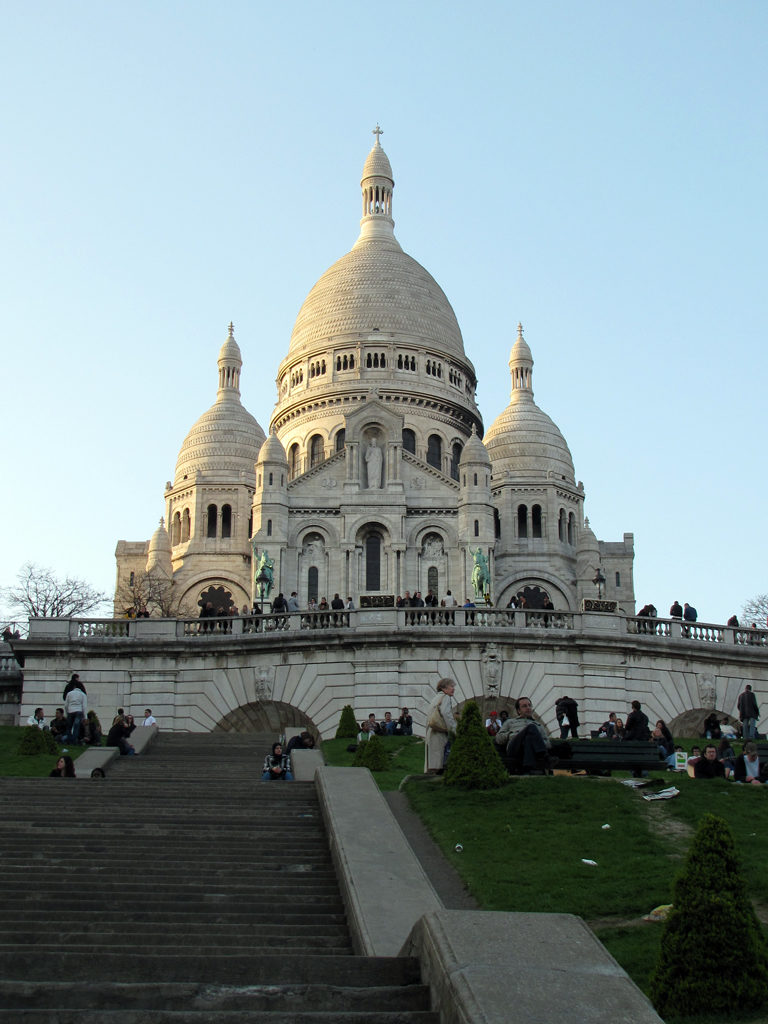Montmartre was once a farming community with windmills looking over the city below. Today just two remain and only one of those is in use. There is a small active vineyard at the back of the hill, numerous artists and street entertainers, narrow cobble streets, charming cafes and a general atmosphere quite different from that found elsewhere in the city. The name has always been the subject of disagreement, some arguing it originated from the “mount of Mars,” a Roman temple at the top of the hill, others asserting it means “mount of martyrs,” a reference to the martyrdom of St. Denis, who was beheaded here with fellow saints Rusticus and Eleutherius.
When Napoleon III and the Prefect of the Seine Department Baron Haussmann planned to re-design Paris in the 1860s, a first step was to grant large sweeps of land near the center of the city to friends and financial supporters. This drove the original inhabitants to the edges of the city – to the districts of Clichy, La Villette, and the hill with a view of the city, Montmartre. This walk is a short introduction to some of the sites. It is a great neighborhood to explore, so don’t worry if you stray off the path below.
Begin your walk at the metro station into place des Abbesses. There is the church of St John of Montmartre in the square and plenty of cafes and shops around to come back to later. You could take a walk down rue Lepic and see some of the sites there or head up the hill. Exit the square by the LCL bank and turn right after the tree onto rue Ravignan, which leads to tree-studded place Emile- Goudeau at the top of a few steps. At no. 13, across from the Timhôtel, is the Bateau-Lavoir (Boat Washhouse) – gutted by fire in 1970, this building, known as the cradle of cubism, has been reconstructed by the city. Picasso lived here (1904-12) and painted one of the world’s most famous portraits, The Third Rose (of Gertrude Stein), as well as Les Demoiselles d’Avignon.
Back on rue Ravignan, turn left, the road ends at place Jean-Baptiste-Clément. Go to the end of the street and cross onto rue Norvins (on your right). If you have time, head along rue Norvins and find the wall with the superb tribute to a Marcel Aymé story. Head back to where rues Norvins, St- Rustique, and des Saules collide a few steps from rue Poulbot. Turn right and go down rue Poulbot. At no. 11 you come to the magical world of Espace Dalí Montmartre which features 300 original Dalí works, including his famous 1956 lithograph of Don Quixote. Rue Poulbot crosses tiny Place du Calvaire where you find a panoramic view of Paris. From place du Calvaire, head east along rue Gabrielle, taking the first left north along the tiny rue du Calvaire, which leads to the Place du Tertre.
This old town square is a tourist favorite. All around the square are terraced restaurants. The cafes overflow with people, as do the indoor and outdoor art galleries. You will be asked countless times if you want your portrait sketched by the wandering artists – if you go ahead then be aware it can take 30-40 minutes and be sure to confirm a price beforehand. There are plenty of souvenir shops nearby but also streets that you can stroll into to escape the crowds.
As you leave the square, turn right and directly in front of you, on rue du Mont-Cenis, is St-Pierre, where it is claimed the Jesuit order was founded. Originally a Benedictine abbey, this church has played many roles: a Temple of Reason during the Revolution, a food depot, a clothing store, and even a munitions factory. These days, one of Paris’s oldest churches is back to being a church. Facing St-Pierre, turn right and follow rue Azaìs to Sacré-Coeur. The basilica’s Byzantine domes and bell tower loom above Paris and present a wide vista. The exterior is laced with gypsum, mined from the hill you are standing on – that’s where plaster of Paris comes from. Behind the church, clinging to the hillside, are steep, crooked little streets that have survived the march of progress.
You can end the walk here by going down through the gardens in front of the Sacre Couer which will take you to the metro station at Anvers (there is also a funicular to the right which costs one metro ticket to ride).
What are your experiences with exploring Montmartre?
Related articles

